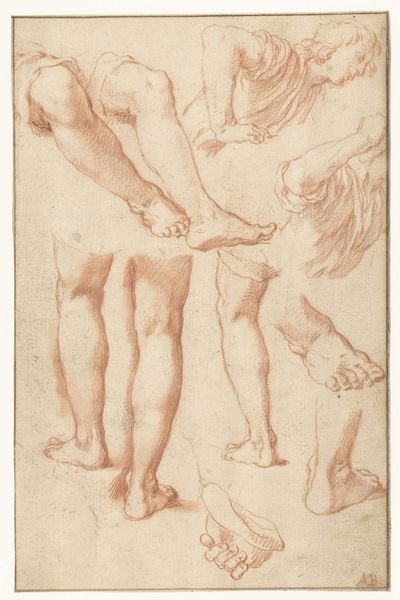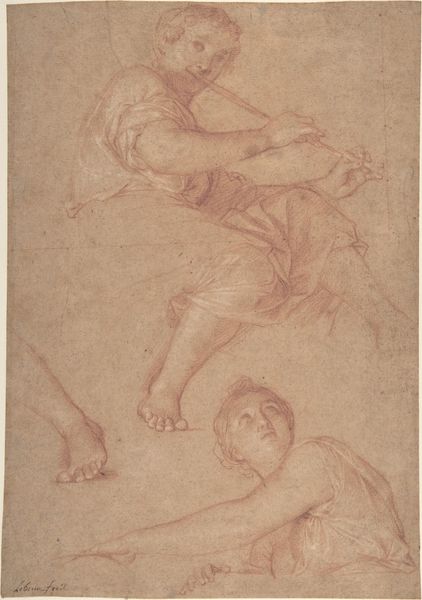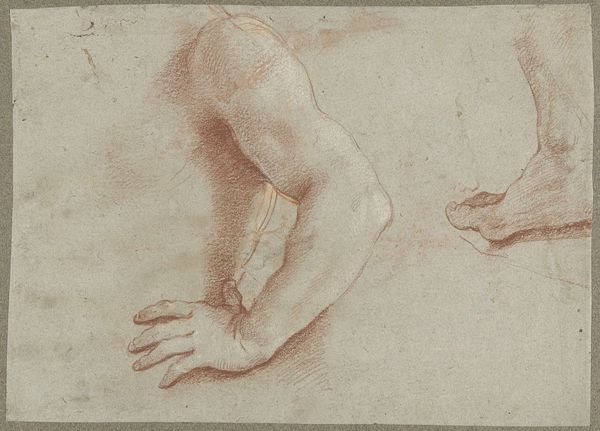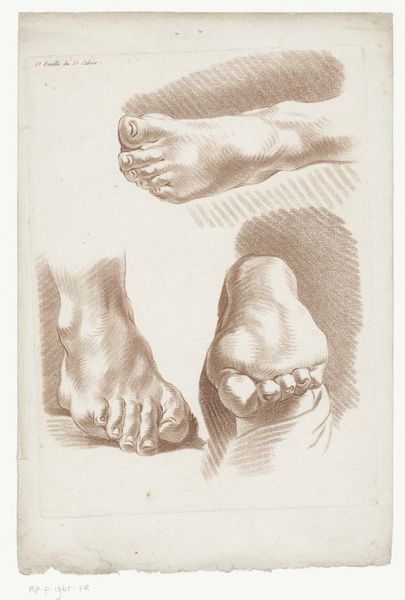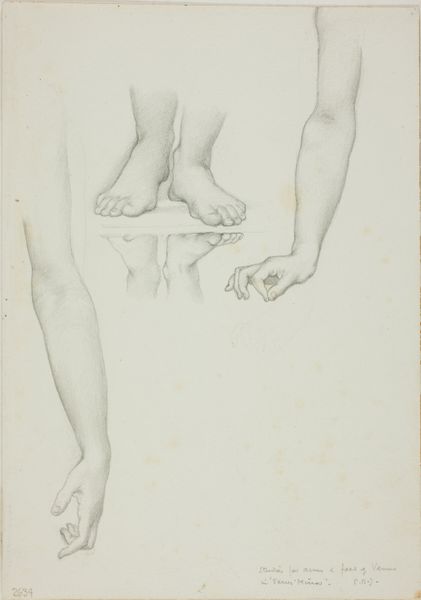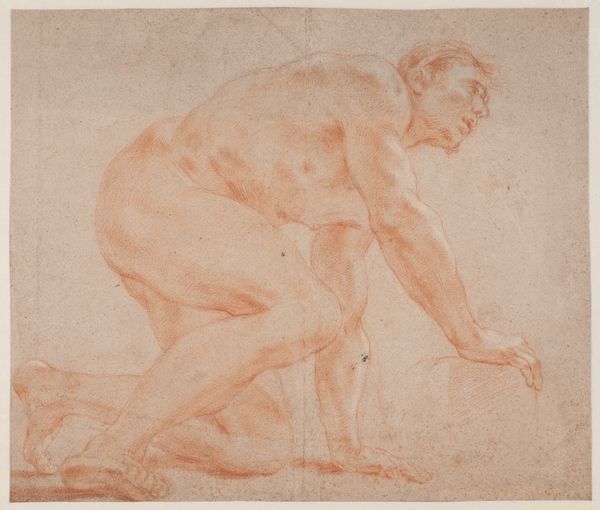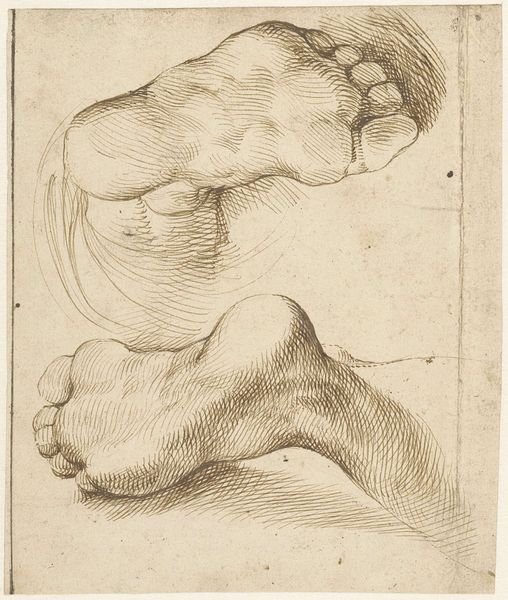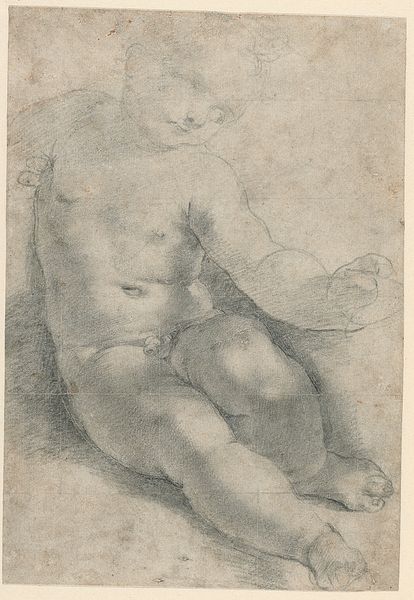
drawing, pencil
#
portrait
#
drawing
#
pencil sketch
#
charcoal drawing
#
mannerism
#
figuration
#
11_renaissance
#
pencil drawing
#
pencil
#
portrait drawing
#
academic-art
Dimensions: height 253 mm, width 166 mm
Copyright: Rijks Museum: Open Domain
Editor: We're looking at "Study of legs, and the torso of a boy" by Abraham Bloemaert, created sometime between 1574 and 1651. It’s a pencil drawing housed at the Rijksmuseum. What strikes me is the focus on individual body parts, almost like a collection of anatomical studies. How do you interpret this work? Curator: Indeed. Immediately apparent is the artist’s command of line. Note the strategic use of hatching and cross-hatching, not just to define form, but to articulate a sense of volume and weight. Observe the musculature of the legs, the curvature of the calf, and the subtle articulation of the ankle bones. These are rendered with meticulous care, divorced from any narrative context. What effect does this fragmentation have on you as a viewer? Editor: It feels very technical and academic, almost devoid of emotion. The isolation of these body parts invites a very specific type of observation, a study in pure form rather than a portrait. Do you think the limited color palette is also significant? Curator: Absolutely. The use of sanguine pencil further emphasizes the drawing’s function as a study. The monochromatic approach allows for a heightened focus on the interplay of light and shadow, texture, and the subtleties of Bloemaert’s draftsmanship. This restricted palette is quite common in academic studies, allowing the artist to fully explore the nuances of form without the distractions of color. It draws us to consider the abstract nature of artistic representation itself. Editor: I see your point. Focusing on technique really reveals the power of something as simple as line and shading. Curator: Precisely. The artist is presenting a self-contained system of representation based on formal properties. This challenges us to think critically about the artistic choices. Editor: That makes me appreciate it in a whole new way. I came in thinking it was just a sketch, but it’s so much more intentional. Curator: Exactly. Close analysis allows a deeper understanding of artistic practice.
Comments
rijksmuseum about 2 years ago
⋮
The painter Bloemaert ‘tried out‘ several body parts on this sheet in order to use them later in a larger composition. This kind of drawing belonged to a repertoire of motifs that the artist had accumulated in the course of many years of study. Bloemaert used the figure of the boy in a painting of John the Baptist Preaching (Herzog Anton Ulrich Museum, Braunschweig).
Join the conversation
Join millions of artists and users on Artera today and experience the ultimate creative platform.
